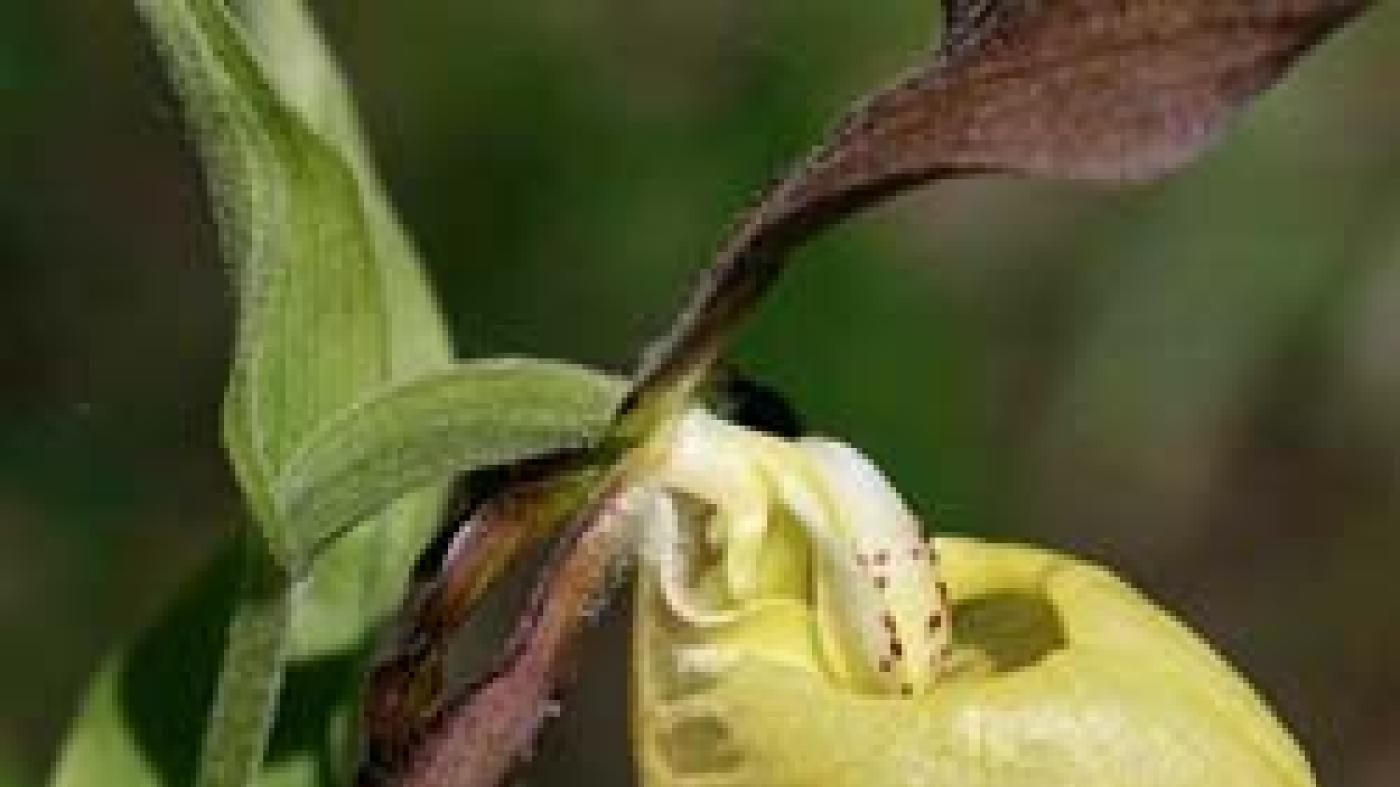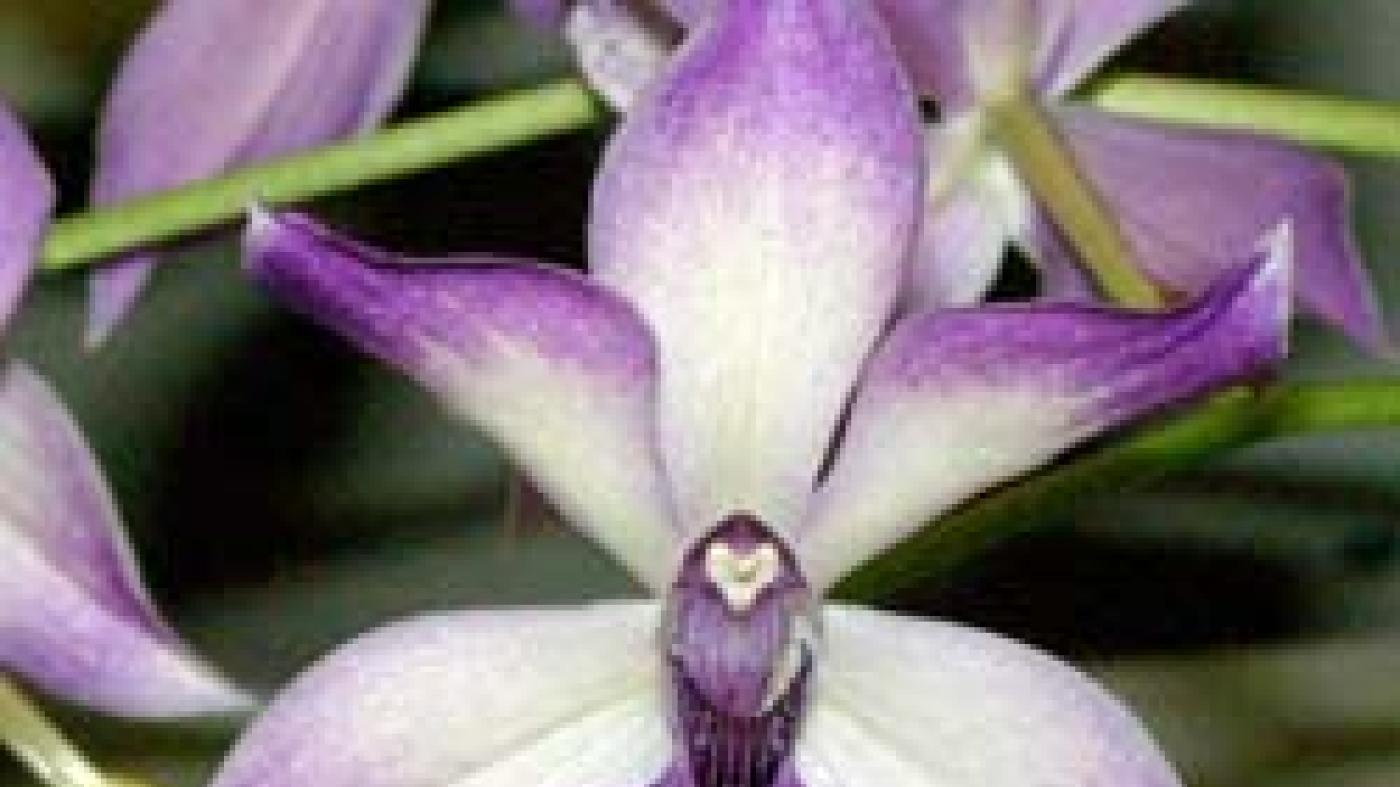
Orchids
<p>Orchid species in the orchid section</p>

Zygonisia cynosure ‘Blue Birds’
Photo by Lois Cinert, Illinois Orchid Society
More than 3,000 newly developed, man-made orchid hybrids are registered every year—‘Blue Birds’ is a glorious recent addition. Can you find the eponymous bird (in mid-flight) in this orchid?
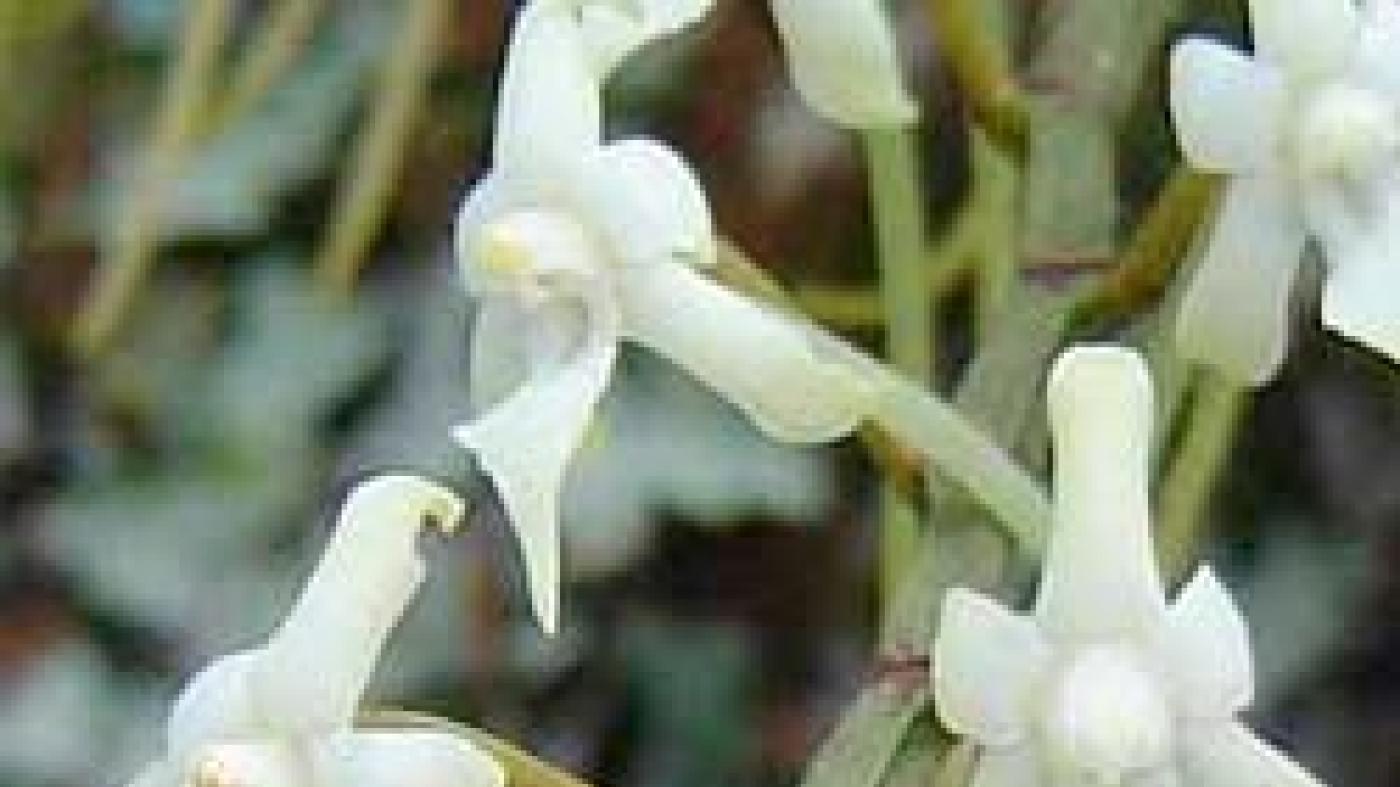
Ypsilopus erectus
Photo ©Petra Ballings via Flora of Zimbabwe
From the hills of Kenya to the continent's edge in South Africa are found five species of Ypsilopus, all with diamond-shaped, pointy lips.
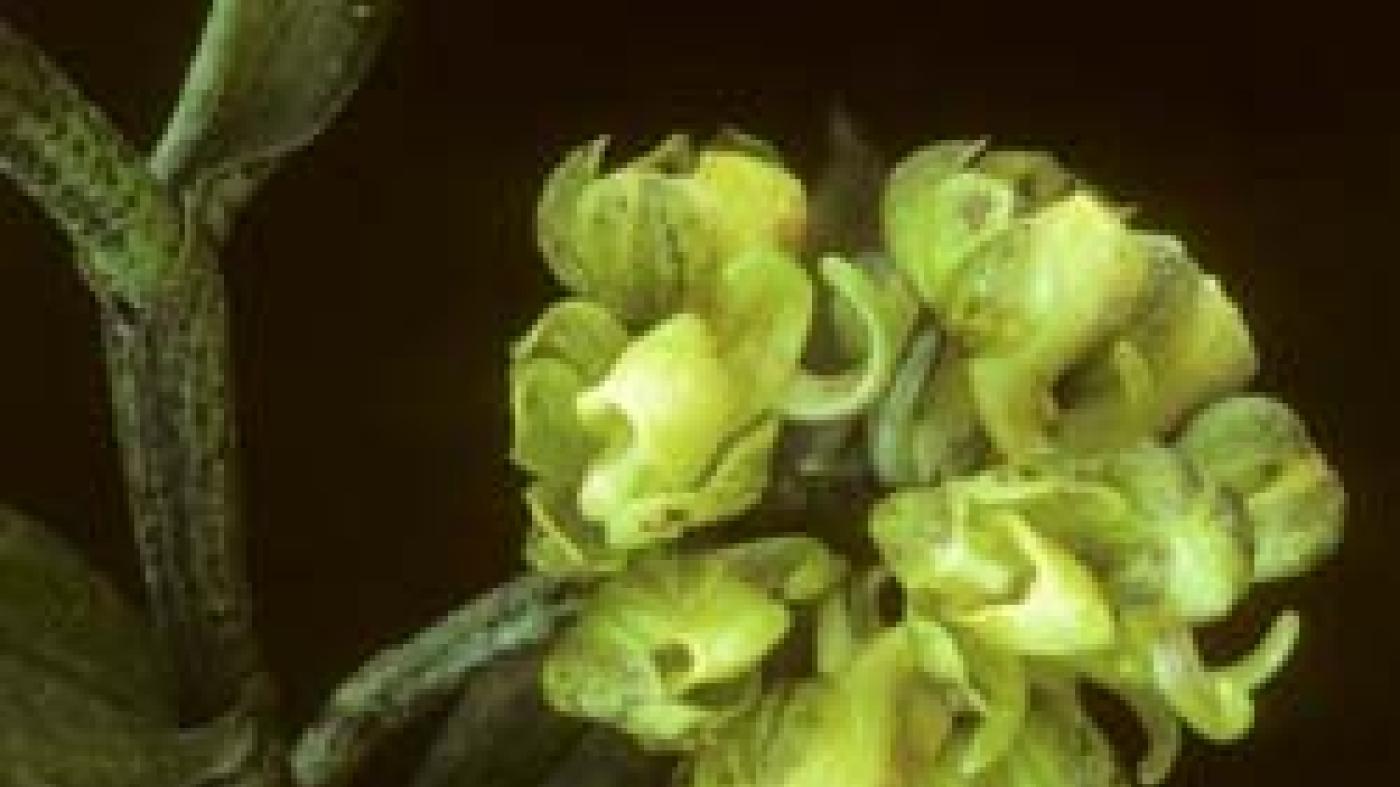
Uncifera acuminata
Photo ©R. Jenny, via the Swiss Orchid Foundataion
An extremely rare orchid, its name is Latin for “bearing a hook,” referring to the spur found on all six plants in this Himalayan genus. Explorers brought this orchid to England, where it was named by John Lindley, considered the father of orchid taxonomy, in 1859.

Tolumnia Genting Pink Lady
Photo by Lois Cinert
Showy doesn’t begin to describe it! You can see why some modern Tolumnia hybrids are called “dancing ladies,” as they spread their colorful "skirts."
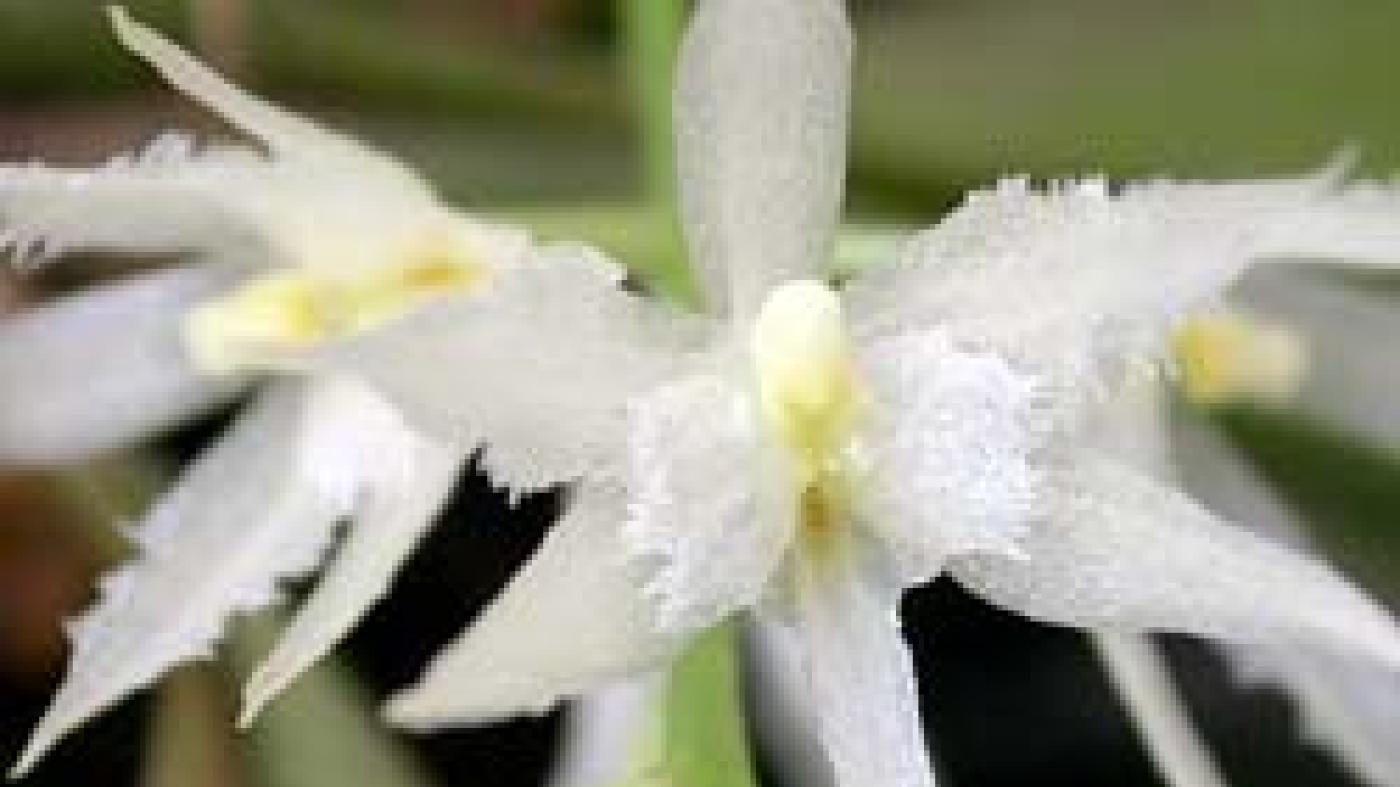
Warmingia eugenii
Photo by Dalton Holland Baptista, via Wikimedia Commons
Only half of all orchids are fragrant—but what a range of scents! There are orchids that smell like grapefruit, coconut, cinnamon, citrus, other flowers (rose, jasmine, freesia), vanilla…and rotting meat (the better to attract flies). Warmingia eugenii conjures the smell of hot metal.
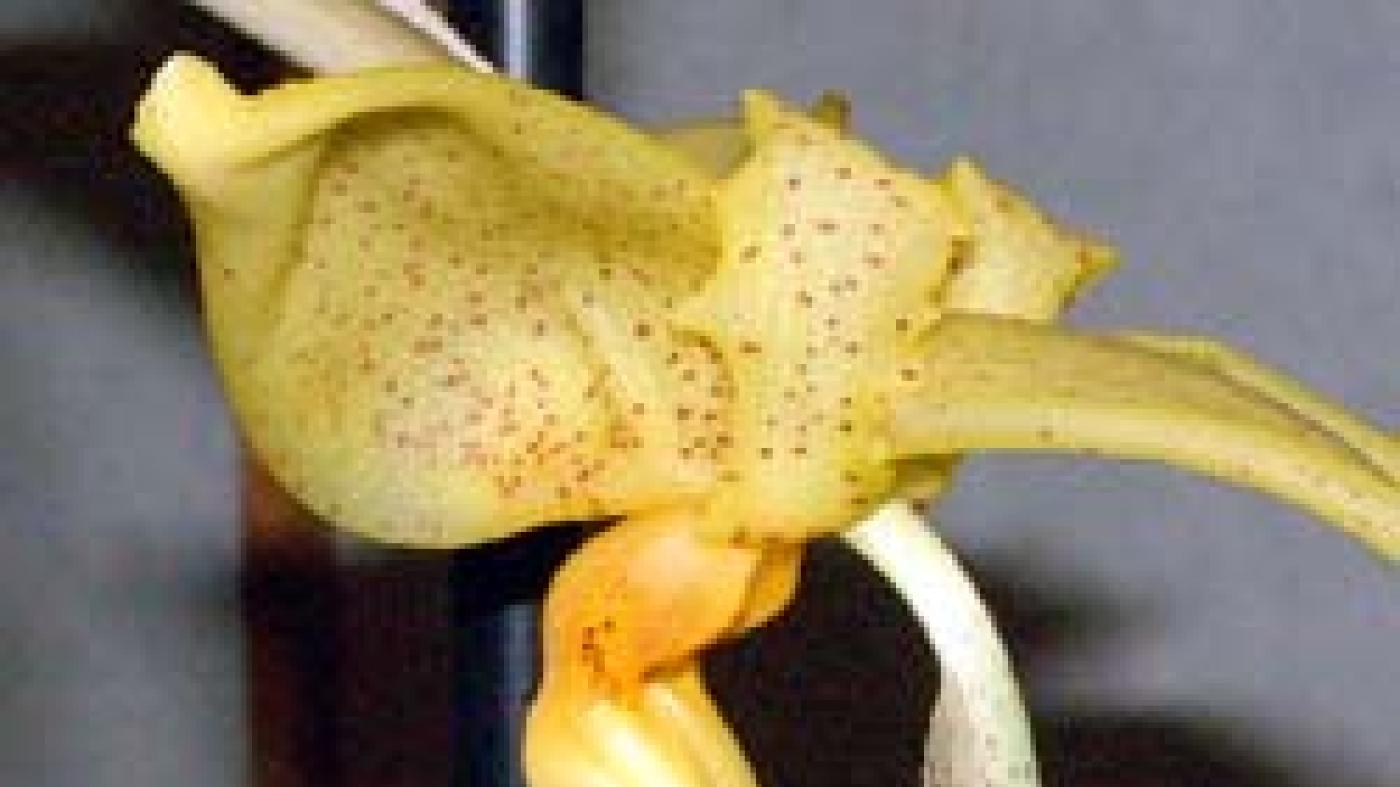
Stanhopea x horichiana
Photo by Lois Cinert
Mother Nature created this cross—like all Stanhopea, its powerfully fragrant flowers hang below the plant, but last just a few days.
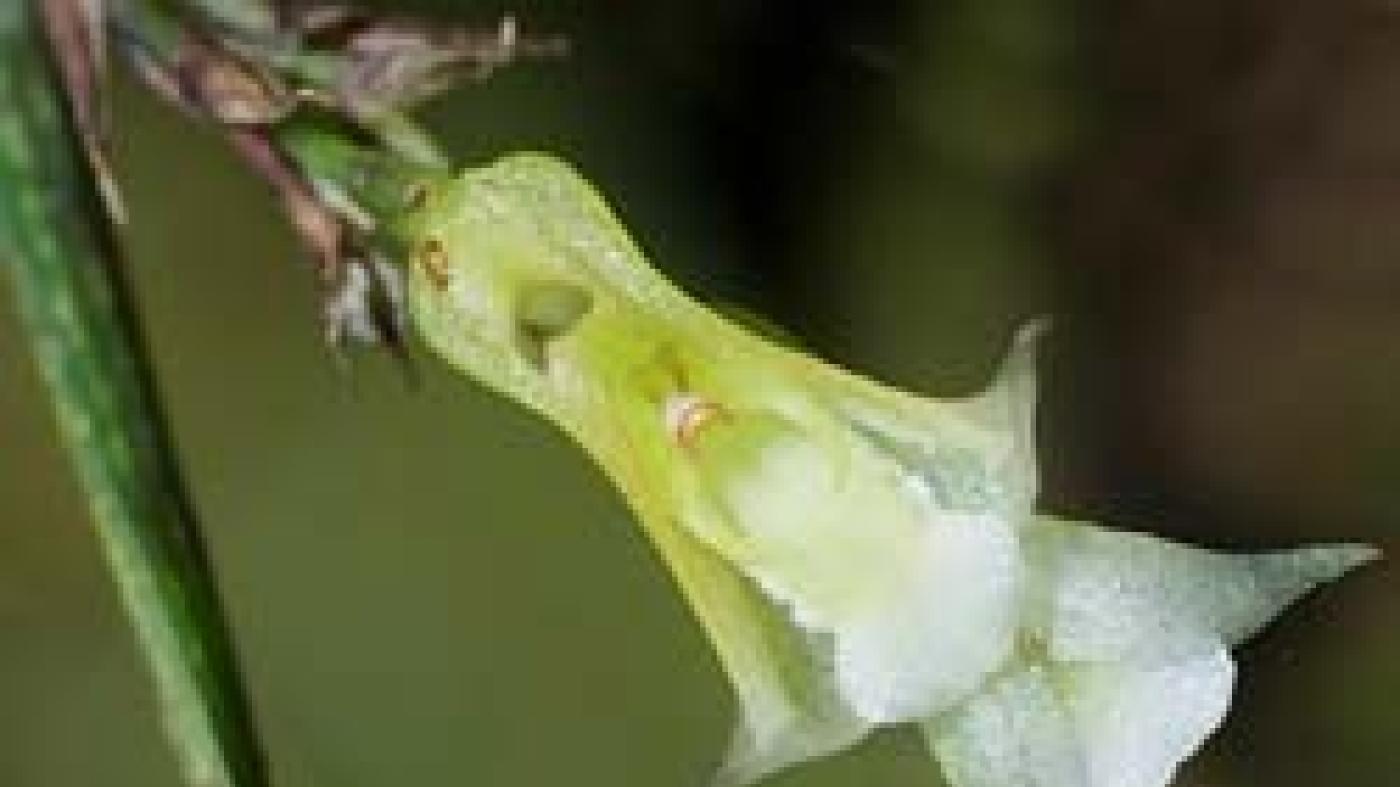
Quekettia vermeuleniana
Photo ©Lachaussetterouge, via lachaussetterouge.net
Some orchids are huge, with plants weighing up to two tons, but some are truly tiny; the flower of this species is just .1 inch in size—a whole .04 inch larger than its aptly named cousin, Quekettia pygmaea.

Restrepia brachypus
Photo via Wikimedia Commons
Traveling to the wet mountain forests of western South America soon? Climb up to about 4,000 to 10,000 feet to see this unusual orchid!

Odontonia Yellow Parade 'Alpine'
Unlike most other plant families, orchids can be crossed at both the genus level (creating an alliance) and the species level. Cross an Odontoglossum with a Miltonia, and what do you get? An Odontonia—one of many Odontoglossum alliances.
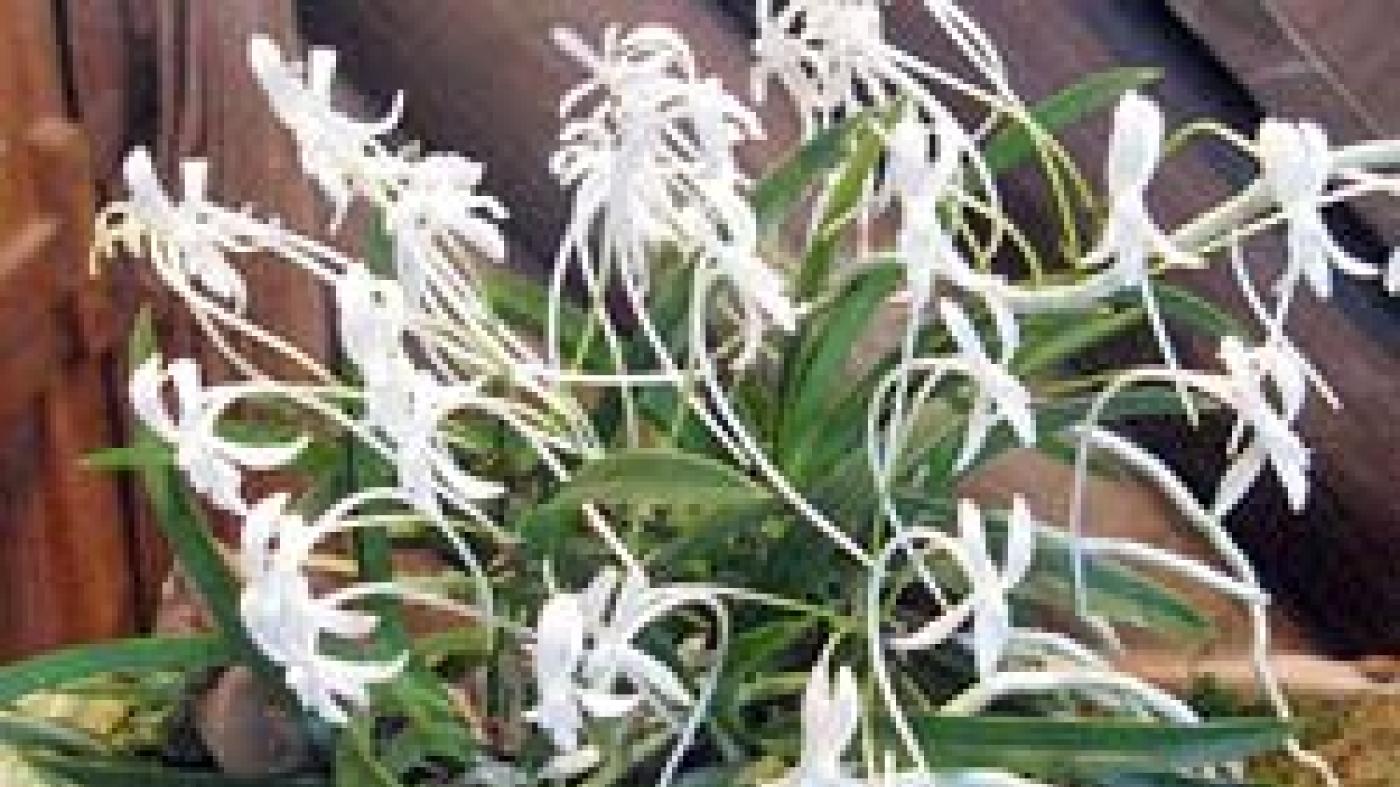
Neofinetia falcata
Photo by Bouba via Wikimedia Commons
In Japan, the native orchid Neofinetia falcata, known as fuh-ran, or “the orchid of the winds,” has highly prized, variegated foliage and a small, delicate, and fragrant flower with a long nectar spur. Its nickname, the “samurai orchid,” harks to the time when only the warrior class was allowed to grow it—or even possess it.
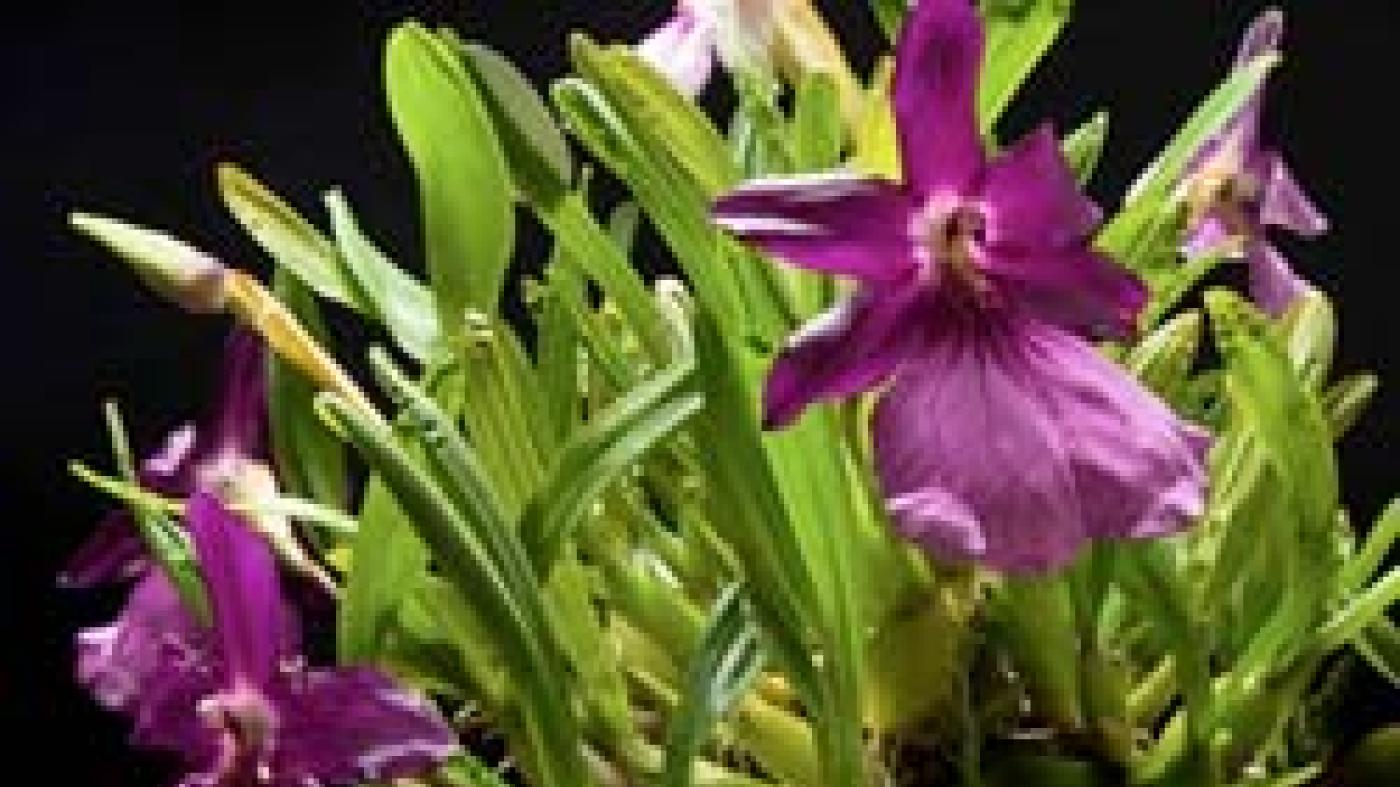
Miltonia moreliana
While smaller than their Miltoniopsis cousins, these are eye-catching and elegant, with a single flower flaunting a graphically marked lip.
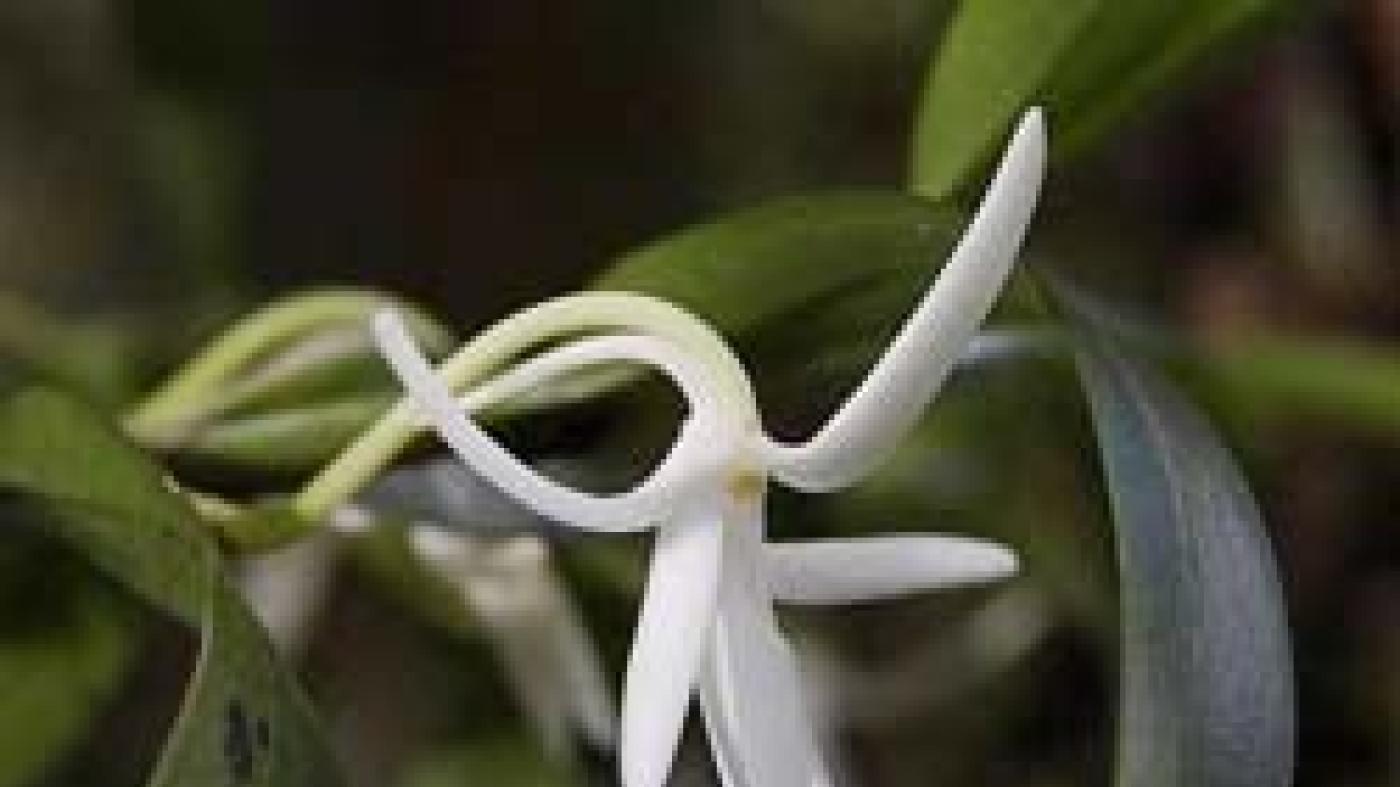
Jumellea fragrans
Photo © R. van Vugt, Swiss Orchid Foundation
It’s the leaves of this orchid that tell a story: strongly vanilla-scented, they were brewed for a fragrant tea in Victorian times. It was called faham, or Bourbon tea—the latter referring to the island of Bourbon (later named Réunion), where the orchid is native.
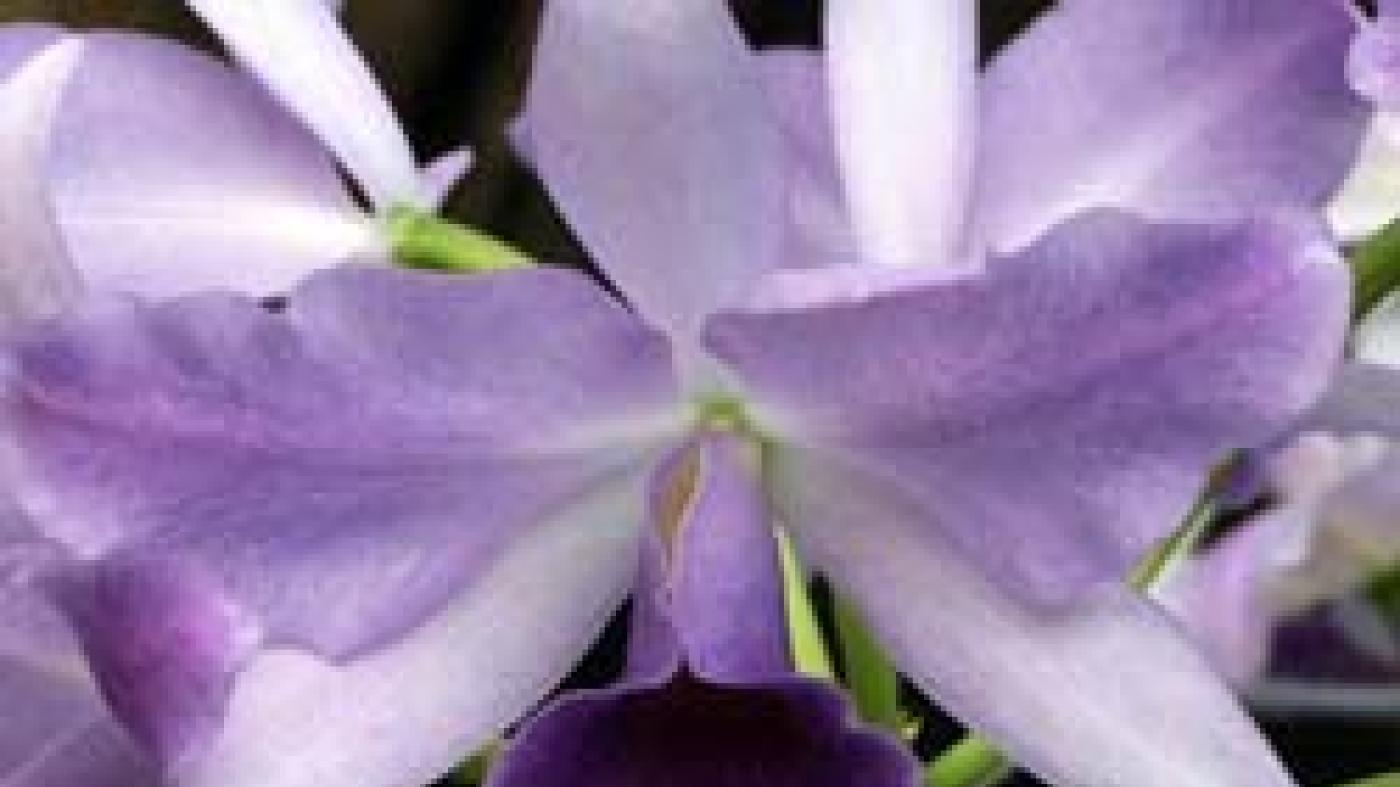
Laeliocattleya Mary Elizabeth Bohn ‘Royal Flare’
Photo by Lois Cinert
Cattleya alliances—hybrids made by crossing cattleyas with another orchid genus—have led to some of the biggest, most deliciously fragrant, strikingly colored orchids, as Laeliocattleya Mary Elizabeth Bohn ‘Royal Flare’ proves.
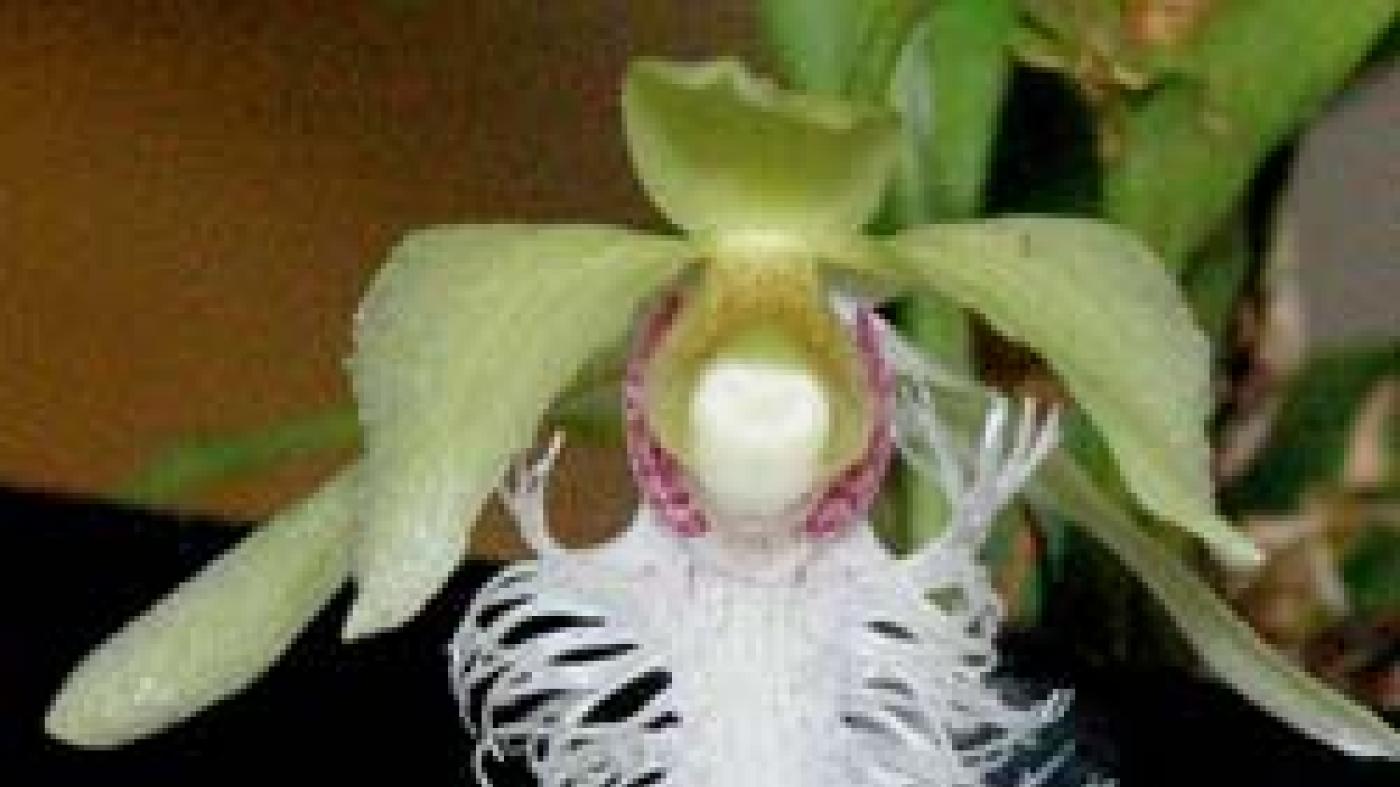
Kefersteinia mystacina
Photo by Lois Cinert
A fantastically hairy-looking lip not only gives this flower its common name (the bearded orchid), but also makes it understandably popular among collectors and photographers.
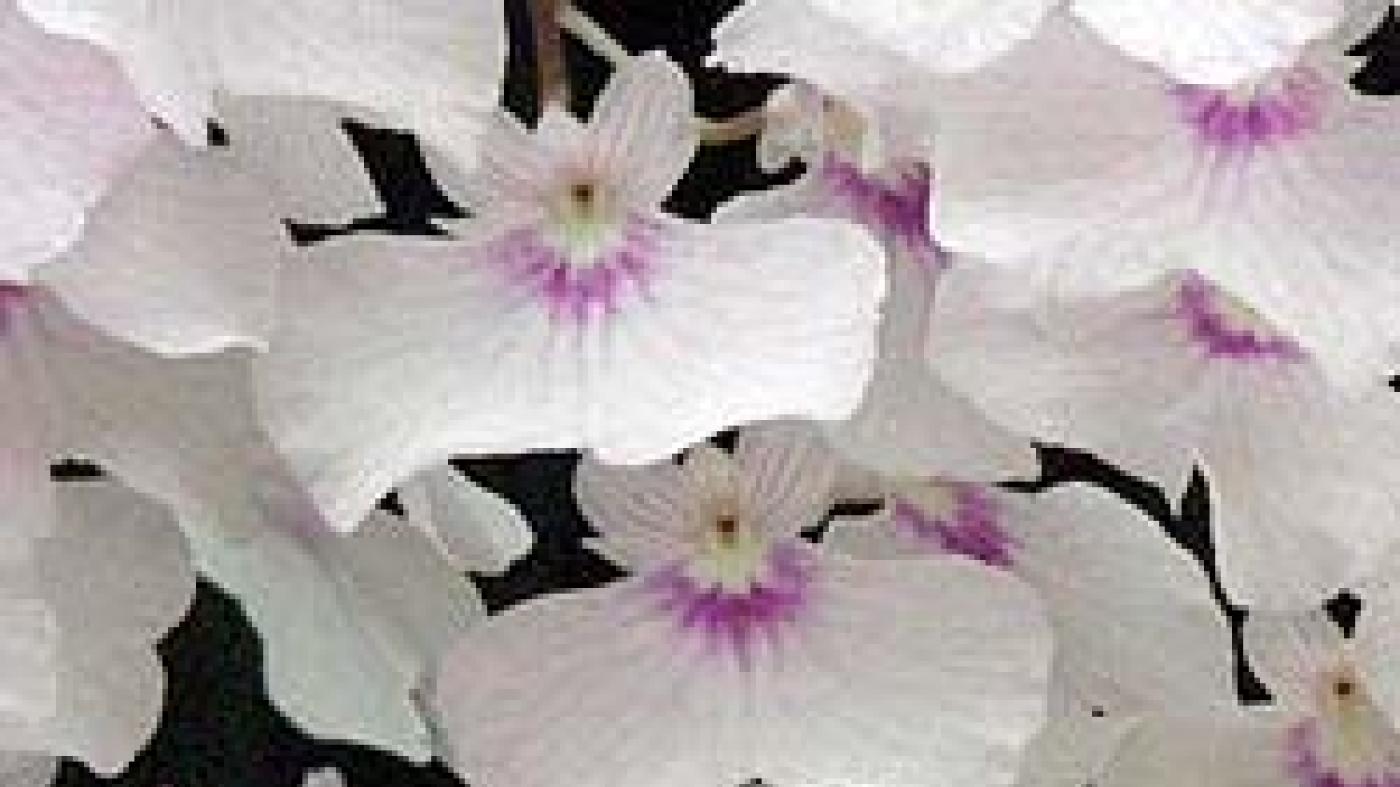
Ionopsis utricularioides
In Greek, "Io" means violet-colored, and "opsis" means resembling: and, indeed, the lip of this pretty, dainty orchid looks quite a bit like a violet. In the wild, its color varies from white to lavender to purple.
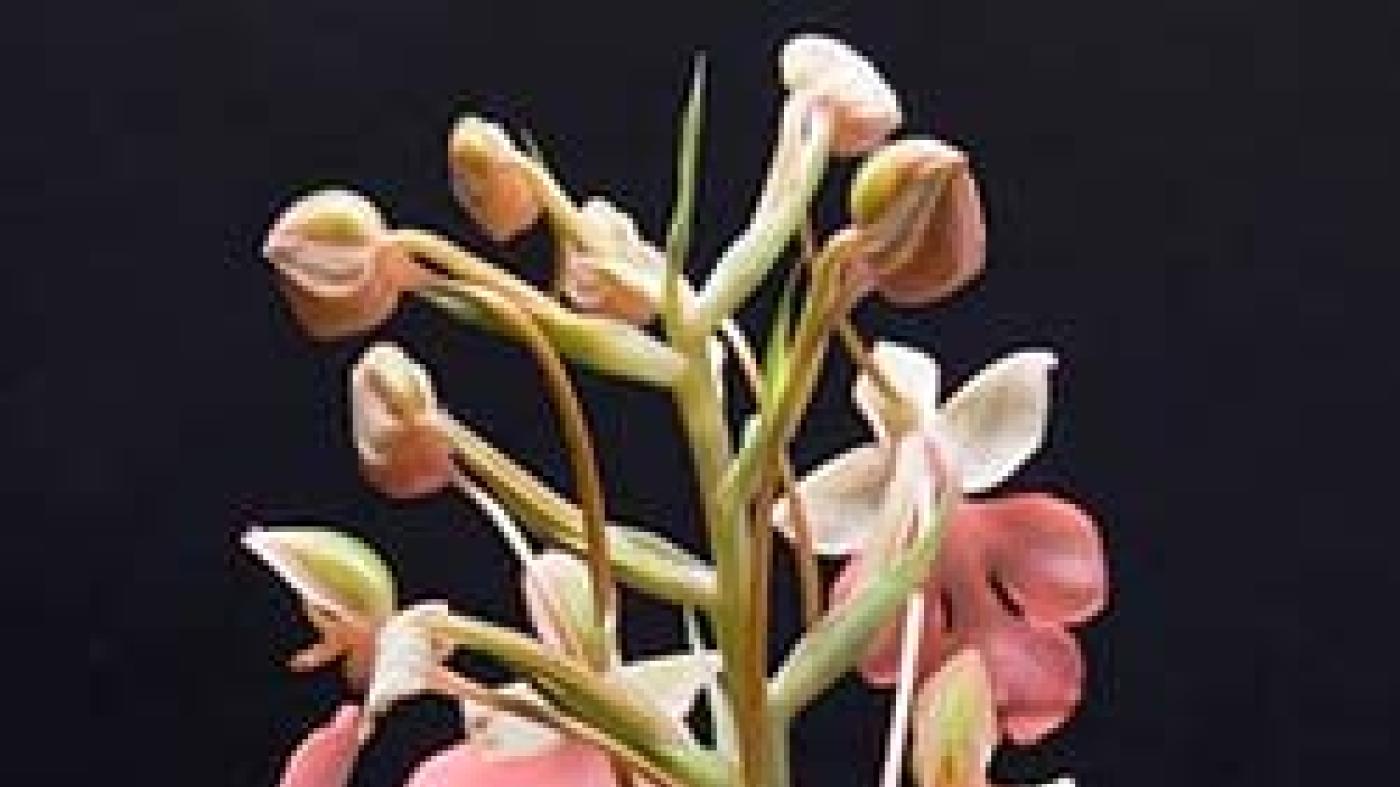
Habenaria erichmichelii
It’s hard to stop staring at this gorgeous Habenaria’s lip (or labellum, the largest petal), with its fantastic shape and lipstick-perfect color. But notice this small terrestrial orchid’s leaves, too—they’re wonderfully checked and spotted.
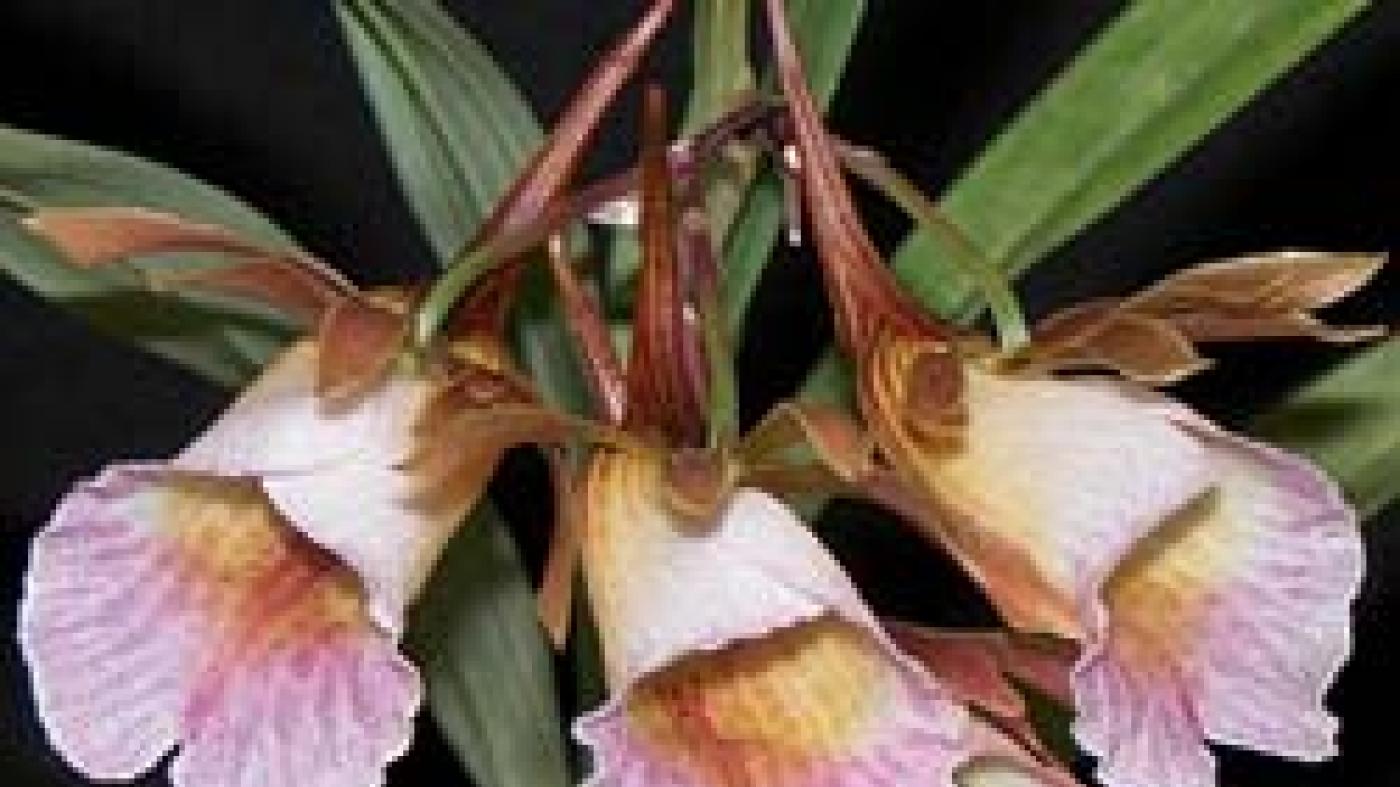
Galeandra baueri
There are only 20 species in the genus Galeandra, and they are spread from Mexico through Central America to Suriname! Pollinated by orchid bees in the Euglossa genus are metallic “ornaments” of blue, green, and copper.
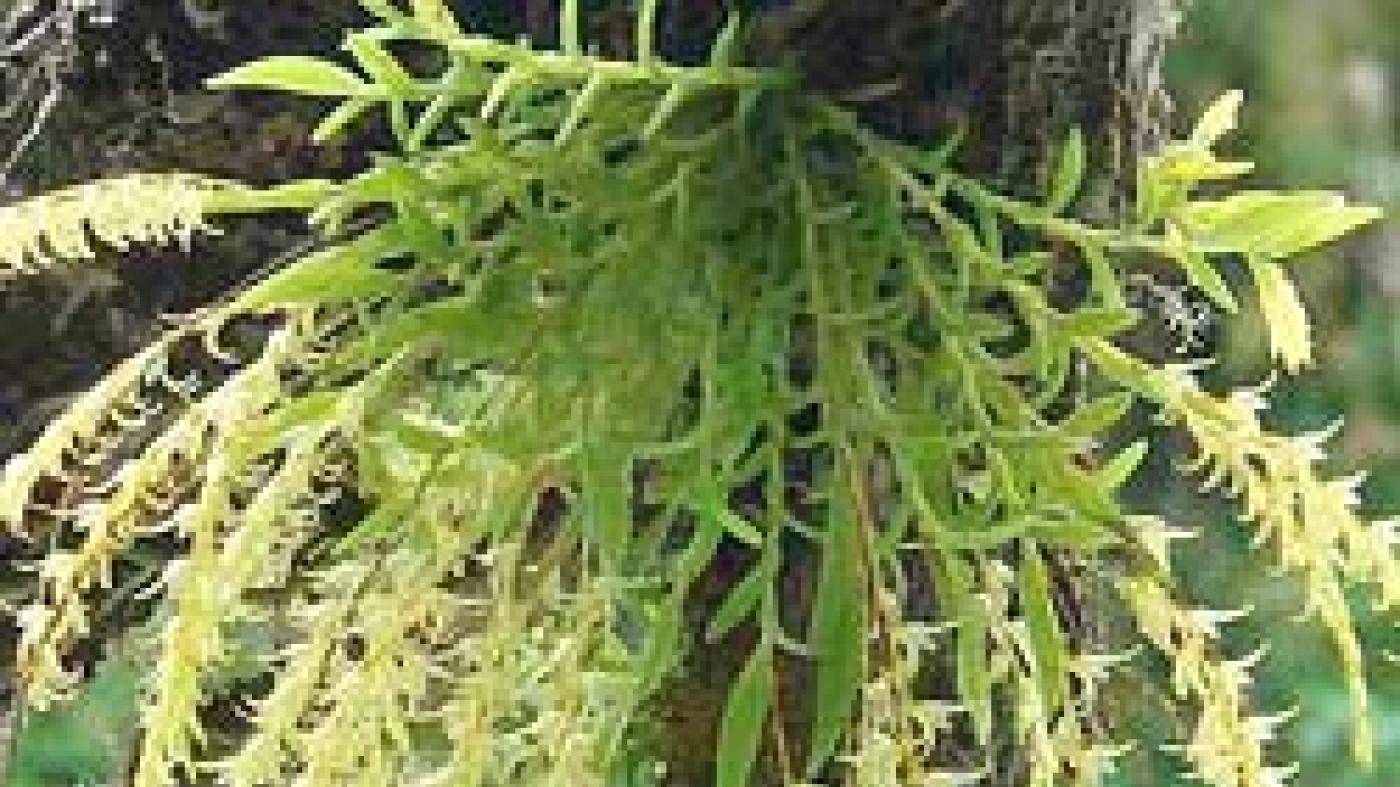
Frondaria caulescens
Photo by Ecuagenera.com
While many genera in the orchid family have hundreds, or even thousands of species, the genus Frondaria (Latin for “a crown of leaves”) has just one—and you’d have to travel to the mountainous forests of the Andes to see it. Even then you’d have to look closely—it’s a tiny plant with even more minuscule flowers.
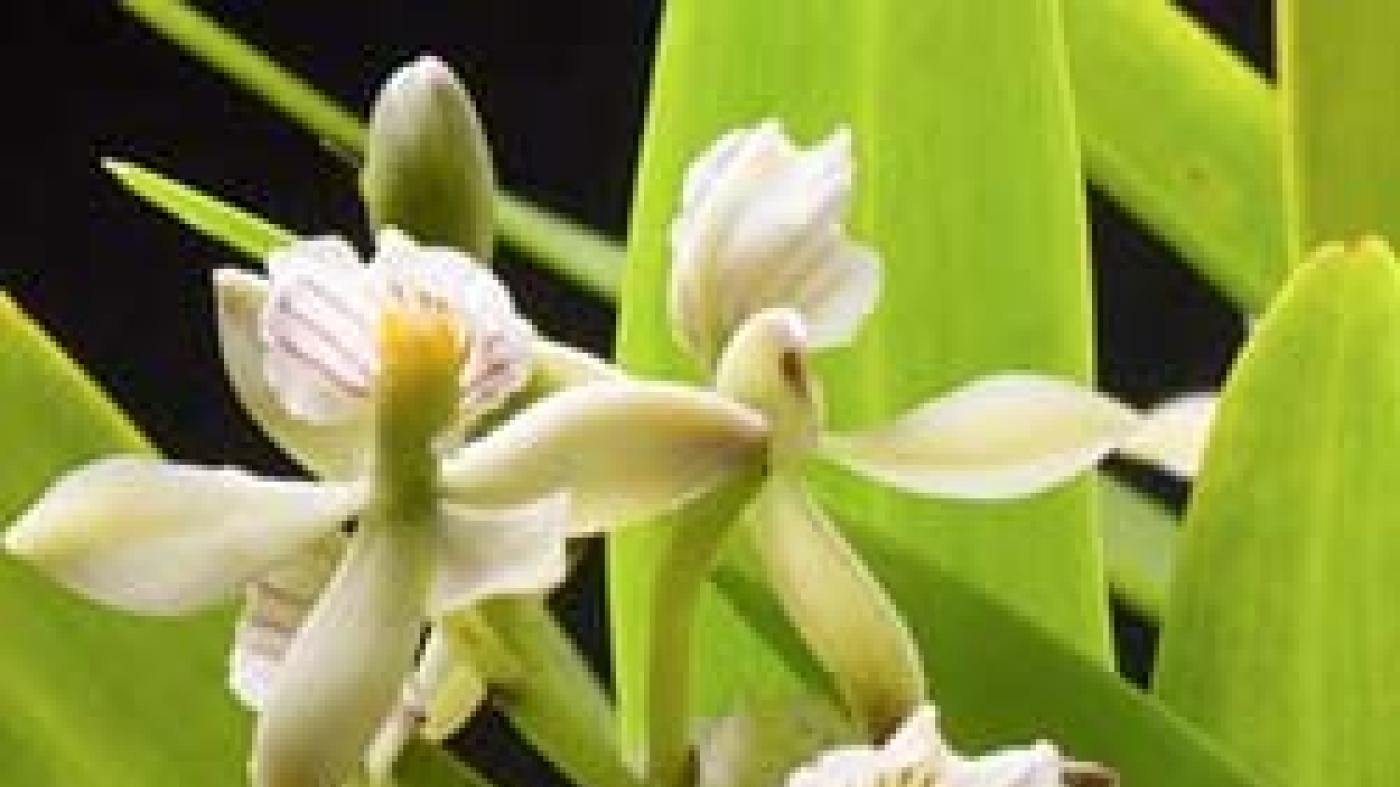
Encyclia radiata
Powerful fragrance in a small package: Encyclia radiata’s scent is considered one of the most delicious of all orchids. Look carefully at the small flowers (the plant stands just 9 inches tall)—the lip is upside down, and at the top of the flower, find a characteristic that gives orchids like this the nickname “cockle shells.”
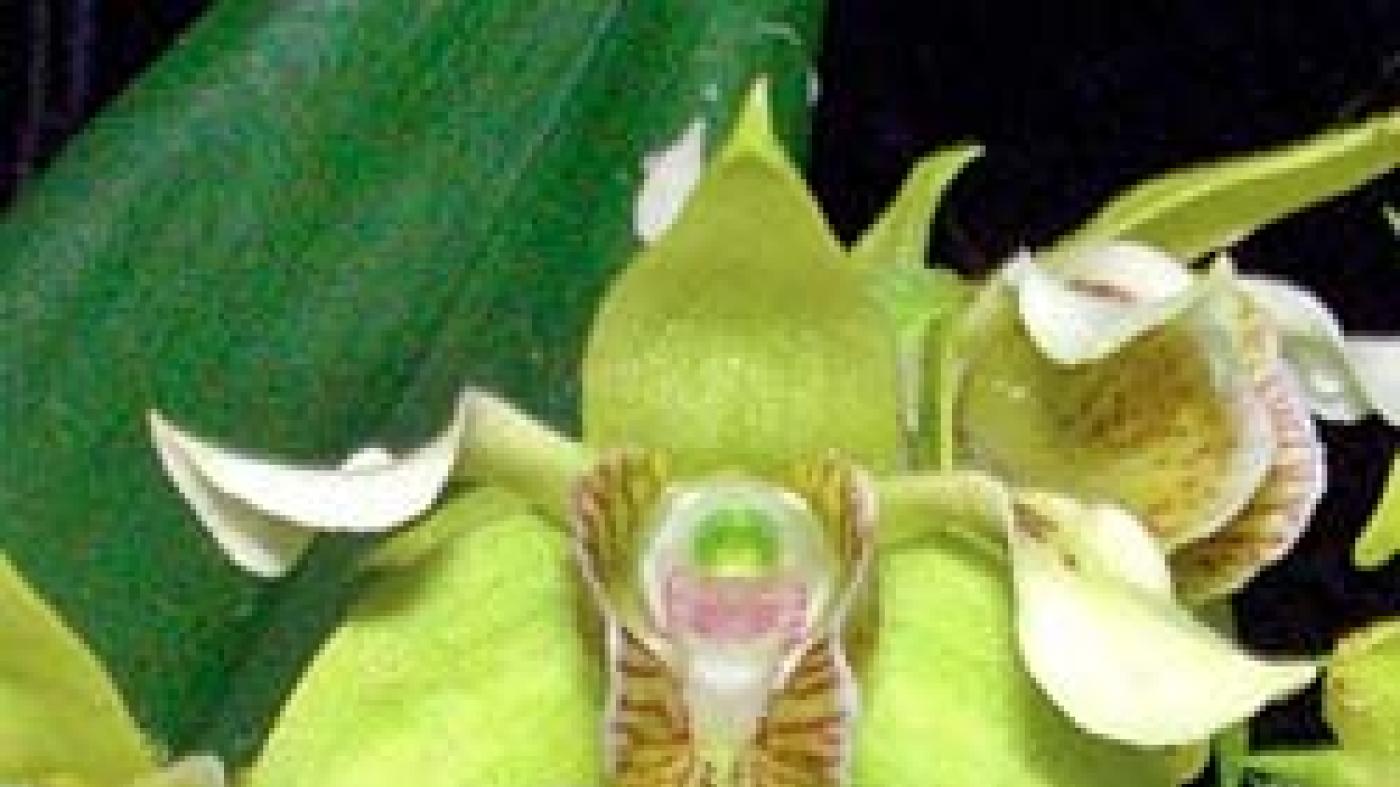
Dendrobium macrophyllum
To give you a good idea of the vast diversity in the family Orchidaceae, there are well over 1,000 orchids in the genus Dendrobium alone. Dendrobium macrophyllum was one of the first orchids to be described and illustrated—in John Lindley’s Sertum Orchidaceum in 1838. Like many plants in the genus, it has a long, skinny pseudobulb that looks like cane.
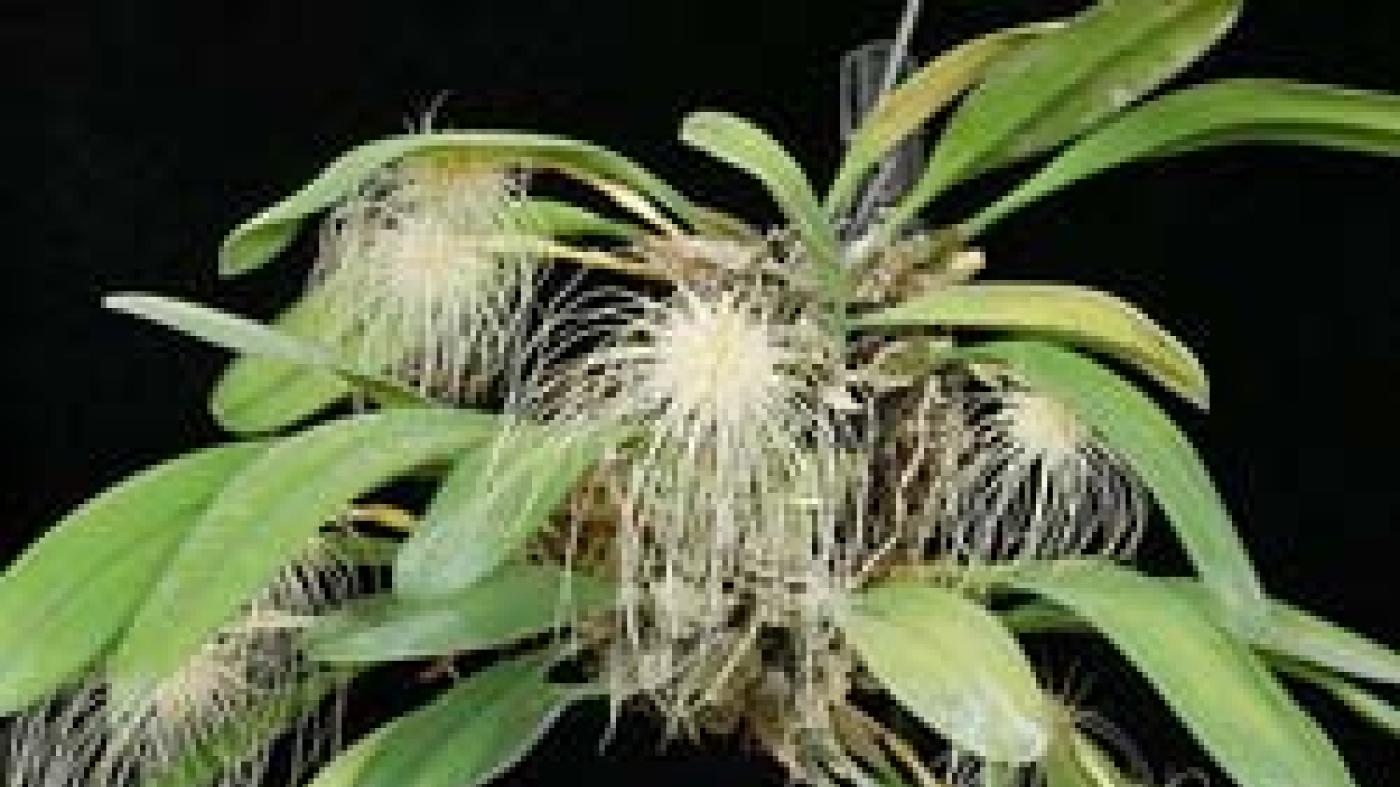
Bulbophyllum medusae ‘Miami’
Medusa orchids are named for the once-beautiful figure in Greek mythology whose wavy hair is turned into a head of snakes by the angry goddess Athena. When Bulbophyllum medusae blooms, usually around November and only for a week, its many tiny flowers conjure the look of many mops of Medusa’s hair.

Angraecum sesquipedale
Photo by CT Johansson [CC-BY-3.0], via Wikimedia Commons
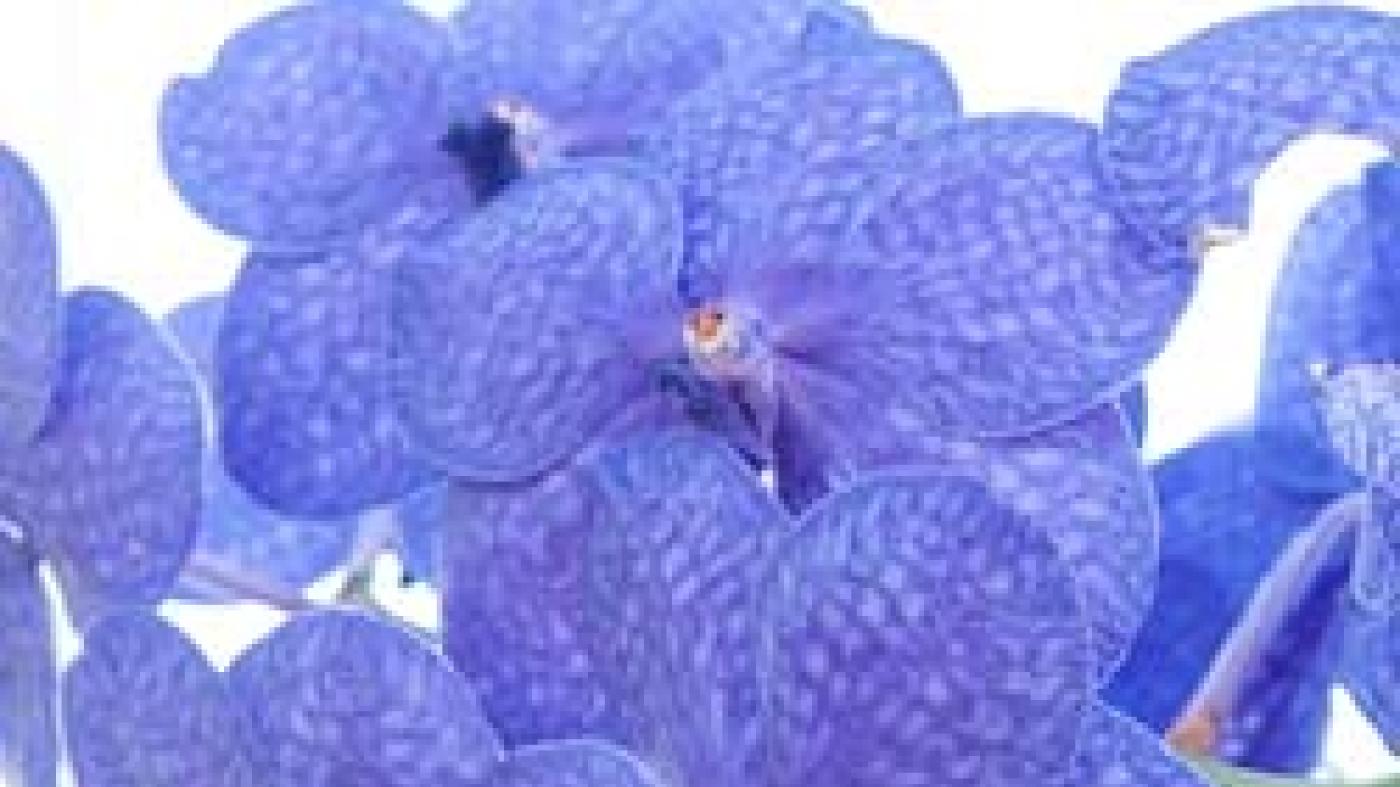
Vanda coerulea
It’s the blue orchid everyone covets, discovered in Burma in 1837 and famously illustrated in lush, full-size color in The Orchid Album, published between 1882 and 1897.
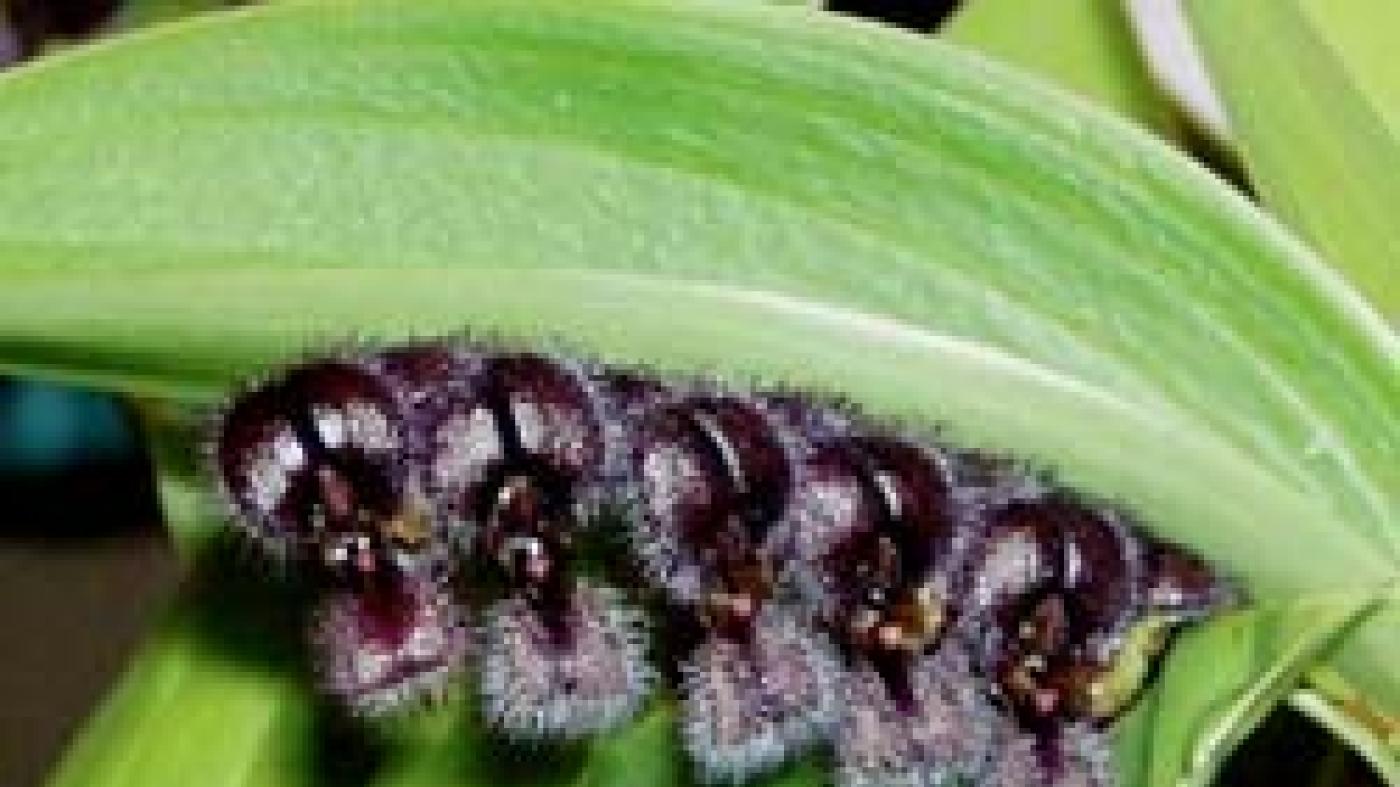
Pleurothallis tarantula
Photo by Lois Cinert
DNA testing is helping to sort out some of the more crowded and confusing orchid genera, like Pleurothallis. This orchid’s genus name keeps changing, but the species name doesn’t: all agree that its tiny flowers look like tarantulas.

Xylobium leontoglossum
Photo ©Eric Hunt and orchidphotos.org
The species name translates as “lion’s tongue,” and this orchid ranges not far from home: species can be found from Colombia and Ecuador. This one was grown by the Conservatory of Flowers in San Francisco.


